- europages
- >
- COMPANIES - SUPPLIERS - SERVICE PROVIDERS
- >
- late harvest
Results for
Late harvest - Import export

HORST WALBERG TROCKENFRUCHT IMPORT GMBH
Germany
Productinformation Figs are harvested in late summer, especially in the mediterranean area. The fig trees, male and female, are pollinated through the fig wasp: Actually, the insects try to deposit their eggs on its leaves. But in the process, only the pollination is taking place - there is no harm done through any infestation by the larvae of the fig wasp. Figs remain on their trees until they are fully ripe – when they drop down, they get immediately picked up and are dried in the sun. But before the actual packaging of the dryfruit-fig they get tested under ultraviolet light - to make sure there aren’t any signs of mold. Figs are more known for ending up as delicious dried fruits because they can’t be stored untreated over a long period of time. Origin Growing areas of figs include mostly arabic countries – and Turkey. But also in Greece and in the mediterrenean region fig fruits are available on a larger level
Request for a quote
INCA VALLEY / INCA CAO
Belgium
For the past hundred years, almost all of the thousand Polynesian Vanilla growers have no longer prepared their own vanillas (drying); they pick them and sell them to the few preparers active in the territory. The result is that each preparer obtains vanilla from at least one hundred planters spread out over the entire archipelago. All of the vanilla from the various plantations and islands are thus mixed together and prepared at the same time. Once the notion of terroir was abandoned, the vanillas were no longer distinguishable. Only fruit which has reached full maturity(dark brown color) is selected, a selection process identical to that used with grapes for “Vendanges Tardives ” and the “Sélections grains nobles” fines Alsace wines. This very late harvesting process, unique in Polynesia, makes it possible to enhance the taste and aromatic qualities of Tahitian Vanilla.
Request for a quote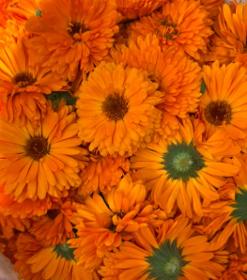
MOUNTAIN ROSE BULGARIA LTD
Bulgaria
Picking - time and method of marigold Collecting and drying a marigold by the doctor is done as soon as its flowers have fully opened. If you are a little late in harvesting marigold and do not pluck the blossomed flowers for several days, then this will significantly affect the quality of the medicinal raw material. Raw materials can be collected throughout the summer and even in the fall every 3-5 days. In addition, such a staged collection of flower baskets contributes to the formation of new buds and increases productivity. However, during this season, the flowers gradually become smaller as the plant becomes exhausted. With the onset of the first frost, the inflorescences lose most of their useful properties.
Request for a quote
ECONOMIC COOPERATIVE DOO
Serbia
Medium to high vigour, with upright branch spreading. It is flowering late in the season. Grows best in temperate climates, but it is tolerant of various climate conditions. Suitable for modern intense orchards, and is giving substantial crops. POLLINATORS: Ideally two or three, such as Kordia, Sunburst, Stella. FRUIT APPEARANCE: Square-shouldered heart shape of the fruit. The skin is bright dark red to deep purple in color, with dark red flesh. FRUIT SIZE: Very large fruits. HARVEST: Late June - early July, with a long harvest window. COMMERCIAL USE: Extremely firm, crunchy, and sweet in taste, this
Request for a quote
ECONOMIC COOPERATIVE DOO
Serbia
A medium to high vigorous variety. When it starts yielding, it is a regular yielder. Flowering is mid-early. POLLINATORS: Self-fertile. FRUIT APPEARANCE: Round, elongated in shape. The skin is blushing red on the sunny side over an orange base. Intensely dark orange to red flesh. Firm, juicy, with an exquisite taste. Overall great quality. FRUIT SIZE: Large. HARVEST: Late July to early August. COMMERCIAL USE: Excellent when consumed fresh as well as for processing. It handles transporting excellently
Request for a quote
ECONOMIC COOPERATIVE DOO
Serbia
Redhaven is a heavy bearer, easy to grow, and maintain. This variety has a moderate growth rate and a pyramidal growth habit with medium vigour. Branches grow in a spreading manner. Flowering mid-early. A resilient variety that gives regular and very abundant yields. Ideally positioned in full sun. POLLINATORS: Self-fertile. FRUIT APPEARANCE: Round in shape, the skin is red-blushed with yellow underlay, almost fuzzless. The flesh is yellow, a bit reddish, juicy, firm yet creamy. Sweet in taste. An overall beautiful appearance. FRUIT SIZE: Medium to large. HARVEST: Early to late July.
Request for a quote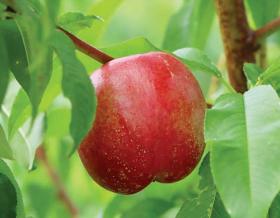
ECONOMIC COOPERATIVE DOO
Serbia
Vigorous growth. Crown has a pyramidal growing habit, with a moderate growth rate. Flowering is early and abundant. Quick bearer with regular and great yields. Easy to grow, grows best when positioned in full sun, recommended doing adequate thinning. POLLINATORS: Self-pollinating. FRUIT APPEARANCE: Slightly elongated, egg-shape. Light yellow base color with orange to fiery red skin overlay covering 50% to 70% of the surface. The flesh is yellow-orange, red around the pip, firm, and juicy. Mildly aromatic, and good taste. FRUIT SIZE: Medium to large. HARVEST: Late midseason, mid-August. Fantasia can be harvested in two stages depending on the desired qualities of the fruit, regarding firmness and taste.
Request for a quote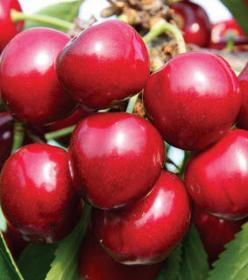
ECONOMIC COOPERATIVE DOO
Serbia
Semi-erect bearing, medium vigorous development, bushy habit. Flowering is mid-late. This variety is very fertile and a regular high yielder with a rapid start in production. Works best if there is full sun exposure. Thinning should be applied adequately, every season. POLLINATORS: Self-fertile. Often used as a pollinator for other varieties. FRUIT APPEARANCE: Round in shape, purple-dark red to black skin, glossy, strong. The flesh is quite firm, sweet, great quality. FRUIT SIZE: Very large fruit. HARVEST: A late variety. Middle to the second part of July. COMMERCIAL USE: Self-fertile and an excellent yielder, this large cherry is an important variety on the market. It handles very well and it is great for transport. Great as a table variety, but also widely used in the processing industry
Request for a quote
ECONOMIC COOPERATIVE DOO
Serbia
It is a robust and vigorous variety with a semierect bearing. It blossoms early to mid in the season. Productive and tolerant variety. It starts yielding early in its life and develops best when the orchard has good sunshine exposure. POLLINATORS: Self-sterile. The best pollinators are Kordia, Stella, Sunburst, Bing. FRUIT APPEARANCE: Elongated and heart-shaped. Skin is glossy, rich dark red in color. The flesh is dark red, firm, crisp, juicy. Taste is sweet-sour, with a nice aroma. FRUIT SIZE: Large. HARVEST: Late in the season. Mid-June. COMMERCIAL USE: Consumed fresh and also used in cooking and baking. It is valuable to the processing industry as it can be preserved, canned, and frozen.
Request for a quote
ECONOMIC COOPERATIVE DOO
Serbia
Medium to a strong and vigorous tree, with a semi-erect growing habit. Flowering is mid-late to late, in April-May. POLLINATORS: Self-fertile, Abbe Fetel, Conference. FRUIT APPEARANCE: It has a characteristic pear shape. The skin color is pale green during the harvest, which changes to a lemon-yellow as the fruit matures. It also has visible, brown lenticels on the surface. The flesh of Williams pear is yellow to white, sweet, juicy, with an accentuated musky aroma. FRUIT SIZE: Medium to large. HARVEST: Late August-beginning of September. COMMERCIAL USE: A very important commercial variety as its yields
Request for a quote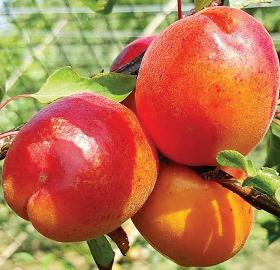
ECONOMIC COOPERATIVE DOO
Serbia
A medium vigorous tree that yields abun - dantly. Crown forms as a wide sphere, and it is recommended to do regular pruning. It is flowering lately, a few days after Hungarian Best. Starts yielding early after planting and is a regular bearer. POLLINATORS: Self-fertile. FRUIT APPEARANCE: Shape is rounded to oval and a bit flat from the side. The skin is of a light orange col - or with a red blush on the sunny side. The flesh orange and juicy, with an exceptional sweet-sour taste. FRUIT SIZE: Medium to very large fruit. HARVEST: Mid to late July. COMMERCIAL USE: Attractive and good quality fruit. Excellent for fresh consumption and widely used in the fruit processing industry.
Request for a quote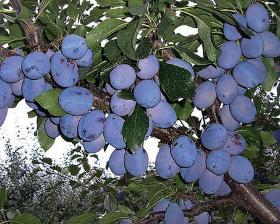
ECONOMIC COOPERATIVE DOO
Serbia
A moderately vigorous tree with a loose pyramidal crown. This variety starts yielding early after planting and gives regular and heavy yields on 1-year branches. It is recommended to be pruned regularly. It is flowering mid-early. POLLINATORS: An outstandingly self-pollinating variety. FRUIT APPEARANCE: Elongated, egg-shaped fruit with a pointer top. Rich blue colored thin skin with a greenish-yellow flesh which is firm and crispy, yet juicy in texture. Aromatic, sweet to sour in taste. FRUIT SIZE: Medium-large. HARVEST: Mid to late August. COMMERCIAL USE: Excellent yielder when maintained properly. Consumed fresh or dried, suitable for processing,
Request for a quote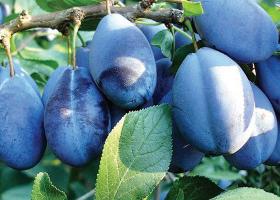
ECONOMIC COOPERATIVE DOO
Serbia
Medium vigorous with a relatively loose crown, round to pyramidal in shape, with strong and flexible branches. Stanley is an early, regular and heavy bearer. Stanley is a good choice for humid climates. Thrives best in sunny places and is easy to grow. It flourishes mid-early. Relatively resilient to drought. POLLINATORS: Self-fertile, but yields more abundantly if planted next to another variety. An excellent pollinator for other varieties. FRUIT APPEARANCE: Oval-shaped fruit. Dark blue to purple in color with a firm, juicy, greenish-golden flesh. Sweet, aromatic, rich flavor. FRUIT SIZE: Medium to large. HARVEST: Late, in Autumn (usually second half of August, early September).
Request for a quote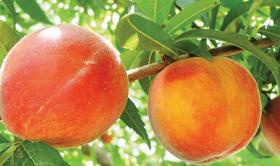
ECONOMIC COOPERATIVE DOO
Serbia
A hardy, vigorous and productive variety, with a low, spreading habit. Grows at a medium rate. Flowering late, and is low temperature resilient. Cresthaven shows best results when exposed to full sun. POLLINATORS: Self-pollinating, but gives the best results when planted near other varieties. FRUIT APPEARANCE: Round shaped, almost fuzzless, smooth but tough skin, yellow with a red blush. Firm yet juicy yellow flesh, showcasing bright red colored areas around the pit. Sweet in taste. FRUIT SIZE: Medium to large. HARVEST: Mid to late August.
Request for a quote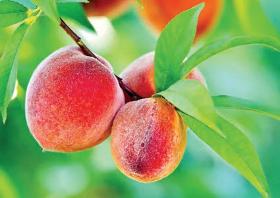
ECONOMIC COOPERATIVE DOO
Serbia
A vigorous variety. Gives abundant yields. Relatively resilient to low temperatures POLLINATORS: Self-fertile. FRUIT APPEARANCE: Rounded in shape. The skin is half red over yellow base color. The flesh is yellow, juicy, and firm. FRUIT SIZE: Medium-sized. HARVEST: Early harvest, mid to late June. COMMERCIAL USE: Used for fresh consumption, cooking, preserving, bottling. Handles transport and manipulation well.
Request for a quote
AGRIFLUIDE S.L.
Spain
ECOFLUIDE-PLUS is an organic product of foliar and root action of plant origin, from enzymatic hydrolysis based on beet molasses and cereals with a high gluten content, totally soluble in water and quickly assimilated. It is a product suitable for use in organic farming in accordance with the UNE 142500 standard with CAAE 25545 Organic Registration. AGRONOMIC ADVANTAGES - Fertiliser registered as organic. - Optimum potassium concentration. - Phosphorus supply necessary for the needs of the crop. - Accelerates the formation of sugars and fats. - Intensifies fruit colouring. - Special anti-blocking agent. - Chloride free. - High content of organic matter. - Necessary in post-harvest conditions, and in late harvests; to restore potassium levels. Packs of: - 1000 L - 20 L - 10 L - 5 L

AGROSTAR
Ukraine
Harvest period: late September – early October. Fruit colour: greenish-yellow with red blush. Taste: tart-sweet and juicy, taste quality excellent. Weight: 170-220 gr. Uses: eat fresh. Transportability: very high Storage: in cold storage – till April.
Request for a quoteDo you sell or make similar products?
Sign up to europages and have your products listed

AGROSTAR
Ukraine
Harvest period: late September – mid October. Fruit colour: red with yellow dots. Taste: sweet and tart, taste quality excellent. Weight: 150-200 gr. Uses: eat fresh, fruit salad, cooking Transportability: very high Storage: in cold storage – till March.
Request for a quote
AGROSTAR
Ukraine
Harvest period: late September – early October. Fruit colour: golden yellow color with red stripes Taste: mildly sweet and vanilla-like, with a floral aroma, taste quality excellent. Weight: 120-150 gr. Uses: eat fresh, fruit salad, cooking Transportability: very high Storage: in cold storage – till March.
Request for a quote
AGROSTAR
Ukraine
Harvest period: late September – early October. Fruit colour: red with waxy bloom and white dots. Taste: sweet and juicy, taste quality excellent. Weight: 130-180 gr. Uses: eat fresh. Transportability: very high Storage: in cold storage – till April.
Request for a quote
AGROSTAR
Ukraine
Harvest period: late September – mid October. Fruit colour: greenish red Taste: sweet and tart, taste quality excellent. Weight: 130-200 gr. Uses: eat fresh, fruit salad, cooking Transportability: very high Storage: in cold storage – till May.
Request for a quote
AGROSTAR
Ukraine
Harvest period: late September – early October. Fruit colour: yellowish-green / gold Taste: a balanced sweet-tart aromatic flavour, which has been described as honeyed, taste quality excellent. Weight: 180-230 gr. Uses: eat fresh, fruit salad, cooking Transportability: high Storage: in cold storage – till May.
Request for a quote
FENOLIO
Italy
The roveja is a small legume similar to the pea, by the roveja colored suit is also resistant to low temperatures, is cultivated in spring and summer and it does not need much water. Roveja is much protein, especially if eaten dried, has a high content of carbohydrates, phosphorus, potassium and very little fat. The manual harvest is definitely the reason for his disappearance, after the arrival of tractors, in the years 50/60 crops such as this are abandoned to their fate. Today is everywhere and only resist was almost abandoned few farmers in the Nerina valley, in particular in Cascia, ARi, maintains and protects an important gastronomic tradition and a unique flavor. In this valley the roveja is sown in March at an altitude of between 600 and 1200 m and is harvested between late July and early August.

CARIAS FARM
Turkey
Turkish dried figs are just dried in the sun at Aydin and Izmir (Smyrna) provinces. Sarilop figs are geographical sign registered as “Aegean Fig” produced in all towns of İzmir. All basic nutrient radicals to synthesize proteins in contained in the dried fruits. Turkish dried figs contain every kind of dietary fibers in high ratios. Smyrna dried figs are the most natural delicious and healthy fruits. Figs Product information Figs are harvested in late summer, especially in the Mediterranean area. Figs remain on their trees until they are fully ripe – when they drop down, they get immediately picked up and are dried in the sun. But before the actual packaging of the dried figs they get tested under ultraviolet light – to make sure there aren’t any signs of mold.
Results for
Late harvest - Import exportNumber of results
25 ProductsCountries